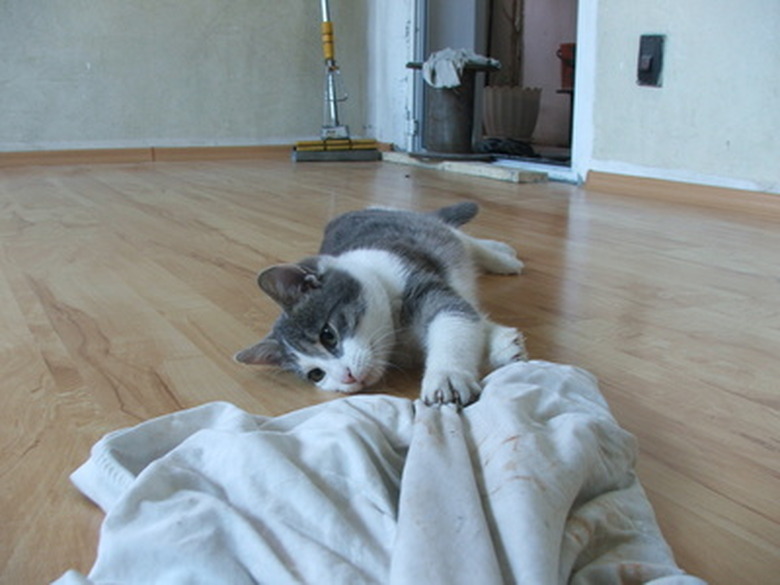The Effect Of Water On Cat Grass
Feline pets are usually attracted to houseplants, attacking the leaves and destroying the stems. Cat grass is a healthy alternative and helps protect delicate blossoms. Watering cat grass is an important way to keep it healthy and maintain growth. Overwatering cat grass or keeping it from direct light can have unforeseen consequences.
Identification
Cat grass can be purchased at the majority of local pet stores. It contains seeds for easy-growing oat and wheat grass, generally packaged in shallow containers. The grasses are often grown with a mixture of peat pod and potting soil.
- Feline pets are usually attracted to houseplants, attacking the leaves and destroying the stems.
- Cat grass can be purchased at the majority of local pet stores.
Water
Like all plants, cat grass needs water and sunlight to develop properly. The peat pod usually helps to absorb water for the plant without leaving a mess of soil behind for felines to track throughout the house.
Considerations
It is very easy to overwater cat grass. The low containers allow for minimal storage space and the plastic lining of the container causes water to evaporate slowly. Be sure to check water levels every time to be certain that watering is necessary.
Dangers
Overwatering cat grass turns the soil acidic, keeps seeds from germinating and encourages root rot. Contagions and harmful fungi that prefer overly moist soil can infect the grasses and make the grass toxic for your pets. Immediately remove any cat grass that has molds or fungi present in the soil or on the leaves.
- Like all plants, cat grass needs water and sunlight to develop properly.
- Overwatering cat grass turns the soil acidic, keeps seeds from germinating and encourages root rot.
Solutions
A powerful method of preventing mold and overwatering in cat grass is to use a spray water bottle to dampen the soil. This provides less water over a larger area of the soil and helps keep the habitat from becoming favorable to contagions. Keep the grass in an area that gets direct light at some point during the day and be sure to check on it regularly for pests.
Rid Of Water Grass
Water grass is a colloquial term for many types of grass-like weeds. Individuals have varying ideas of what type of weed refers to water grass but it usually encompasses quackgrass and tall fescues. The best defense against water grass is to keep the lawn strong and healthy with proper care. Knowing the type of turf you have helps you give your lawn its ideal requirements. Mow the grass so it is no less than 2 inches tall. Mow more frequently if necessary to accommodate a taller grass. Water grass deeply and less frequently. Water in the morning or evening to prevent the water from evaporating before it is absorbed into the soil. Compacted soil is hard on grass and allows the tougher weeds to push through.
- A powerful method of preventing mold and overwatering in cat grass is to use a spray water bottle to dampen the soil.
References
- Iowa State University Extension: Dealing with Plant-eating Pets
- "Starting from Scratch: How to Correct Behavior Problems in Your Adult Cat"; Pam Johnson-Bennett; 2007
- "Techniques & Tips for Gardeners"; Bob Flowerdew and Matthew Biggs; 2006
- University of Illinois Extension; Water Grass — What is it?; Sandra Mason; April 2006
- Colorado State University; Lawn Care; T. Koski, et al.; December 2003
